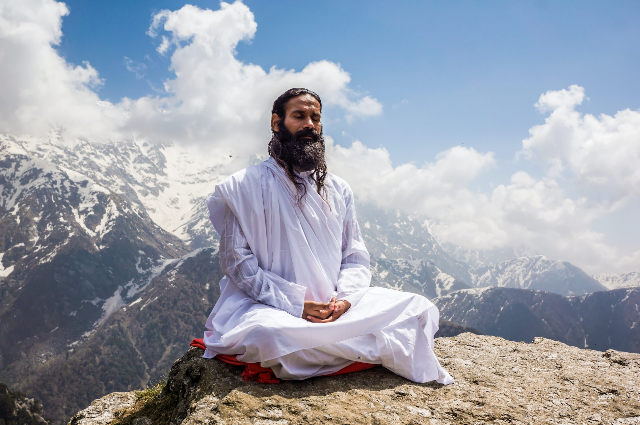
Often when we hear the term psychology, different aspects of it come to our mind. For some people, it is merely common sense, for others, it might be as fascinating as their daydreams and for others, it is untechnical and does not involve logical reasons as in science. So, let me tell you that psychology has evolved from physiology and philosophy which are two of the broad domains in science. So, psychology being a byproduct of it is highly scientific too and involves experimental proofs and facts just as science does.
Now let us discuss on a huge part of psychology (which is based on behaviouralism) which is citti or pure consciousness. The concept of citti and chitta has been mentioned in the yoga system. The citta is framed as the mirror and the citti (pure consciousness)after getting reflected from the mirror( chitta) becomes reflected consciousness. But once the consciousness gets reflected it never remains the same as before as it acquires the properties of the mirror/chitta. The chitta which has elements like sattva, rajas, and tamas. Sattva is responsible for concentration, Rajas dominance creates distraction and tamas dominance creates an excess of sleep, etc. The sattva, rajas, and tamas are the 3 elements of creation and have both physical and mental significance, which we won't be discussing here for the simplicity of the topic.
Let us now move toward the concept of Klesa(sufferings). The 5 major elements of Klesa are:
- Avidya (ignorance)
- Asmita (Dominated I-ness)
- Raga (Attachment)
- Dvesa (Malice/Hatred)
- Abhinivesa (Fear of death)
These 5 things create the cycle of klesa and the cycle of suffering is always mobile(it keeps on moving) without the person inside in it being aware of its mobility. The person inside it for attaining pleasure remains in the cycle even when the cycle has moved on. The possession of something creates an attachment which indeed creates greed and the person feels sukhabhasa (feeling of pleasure) which is temporary and feels diminished pain which indeed is the diminishing pleasure. The immediate byproduct which is seen is the anger, which arises on the feeling of losing everything that is saved by us. Other byproducts like depression, anxiety, loneliness, etc appear but relatively slowly as compared to anger. Hence, a person should always be concerned on getting eternal happiness rather than sukhabhasa (or temporary pleasure).
There are also some checkpoints which can save us get out from this klesa cycle. For eg., the immediate checkpoint is the starting itself,if we don't enter the cycle,it won't be created. Second is not attaching yourself to anything, by which you won't get sad or insecure about your belongings. There are some other checkpoints too, but not as important as the first two since they can cut the cycle immediately after entering it.
Let us now gear towards our last topic on this that is yoga. This may seem just a small 4-lettered word and most people may say this is the practice of different asanas, but trust me tons of books can be written on this and after that also you may fail to explain to someone the whole of its meaning. Let me try to summarise it for you.
The purpose of yoga is to attain pure consciousness. There are 8 ladders of yoga - yama, niyama, asana, pranayama, pratyahara, dharana, dhyana, samadhi.
The concept of Yama is harmony with others. It is again subdivided into 5 parts - Ahimsa (non-violence), Satya (truth), Asteya (non-stealing), Brahmacharya (celibacy), Aparigraha (Non-possession)
The concept of Niyama is harmony for yourself. It is again of 5 parts:
- Sucha (purity within and outside) - Purity of thoughts, it does not mean that if someone has not taken a bath he/she is not pure, or also if they have taken a bath does not means that they are pure. This is a wrong concept that is being followed when we hear of the term purity.'
- Samtosa (self-satisfaction) - If we are self-satisfied, whatever we do we will get pleasure out of it and that remains with us forever.
- Tapas - Someone who does tapasya of something attains tapas.Not only rishis who do meditation attain enlightenment but even if a worker who practices his work daily and becomes proficient in it, also attains tapas.
- Svadhaya - Study for oneself and study by oneself.
- Isvar-pranidhana - Unconditional surrender of all your finite in order to become infinite.
- Asana is sitting in any comfortable posture.
- Pranayama is the practice of your breath control
- pratyahara helps to overcome the problems of mudha citta(sleep)
- Dharana is to hold on your mind at a specific locus.
- Dhyana is prolonged and deepening concentration.
- Samadhi is the last stage where you forget the world around you and you live within yourself.
Yoga helps in overcoming the troubles of citta, sipta, Mudha, Viksipta, Ekagra, Niruddha
Sattva dominance creates the state of Niruddha and dharana creates ekagra citta.
Yoga is a vast domain, parts of which I have tried to explain in crisp.
The day you start practicing yoga, you will see the difference within yourself and prolonged practice of it ultimately makes you a better person.
